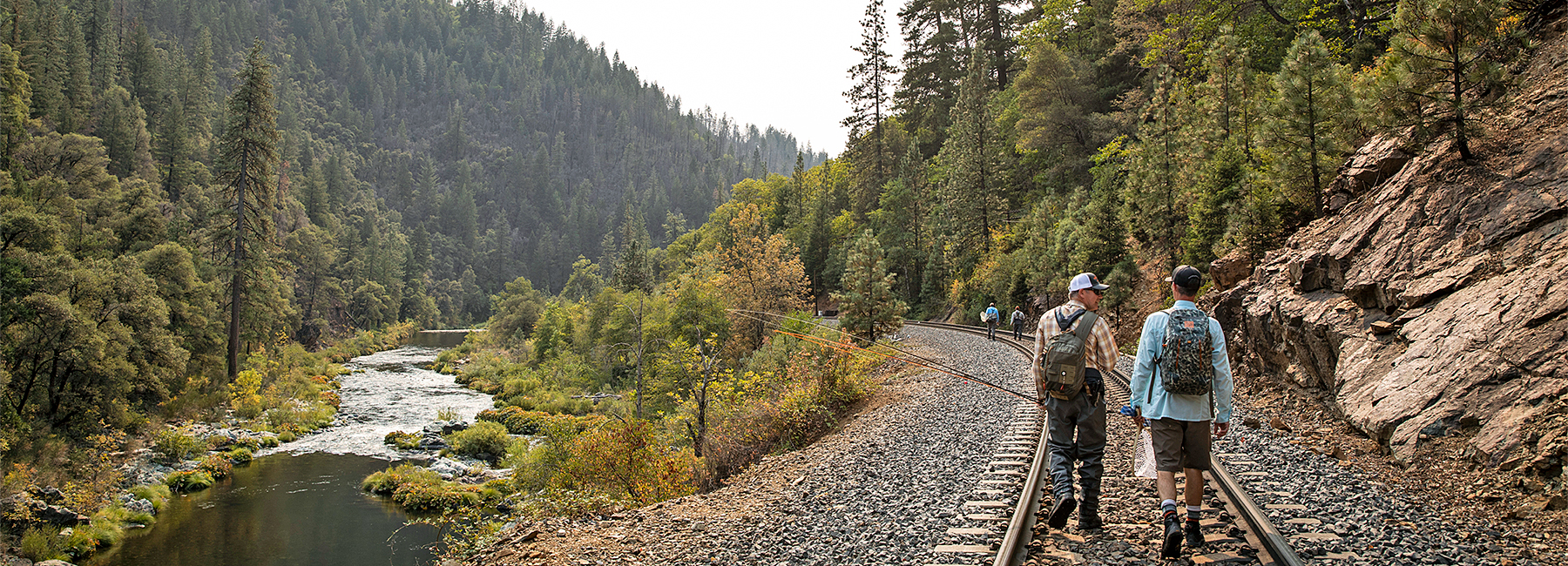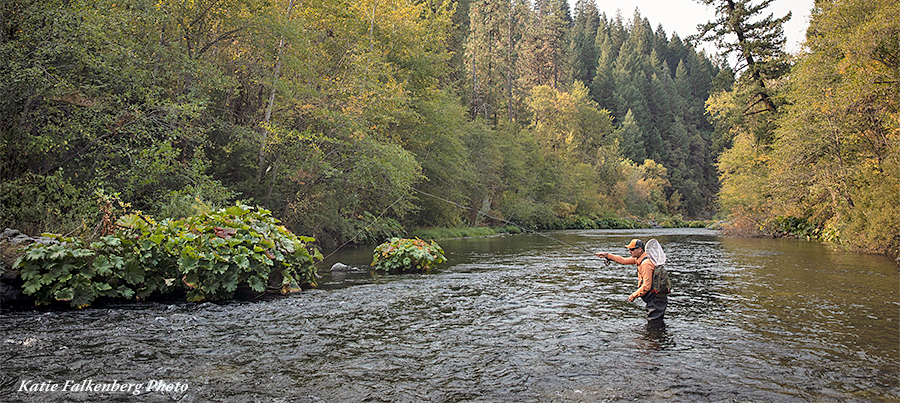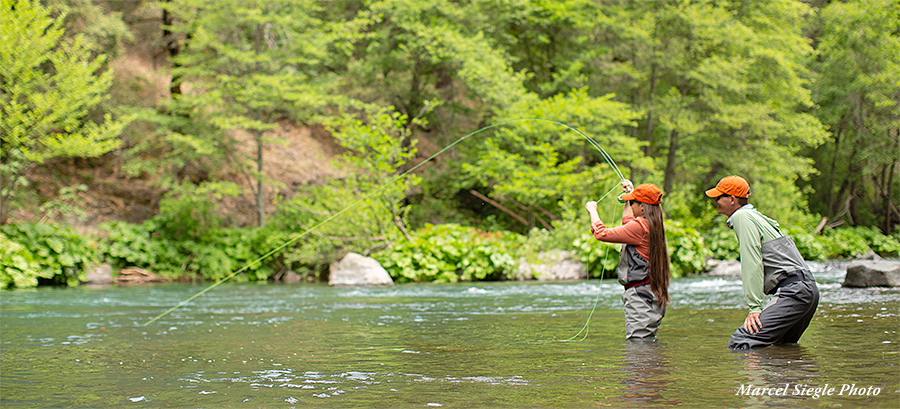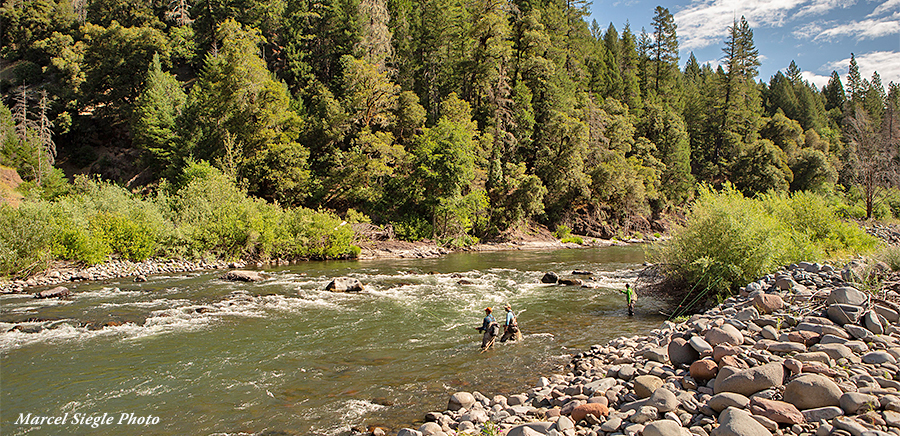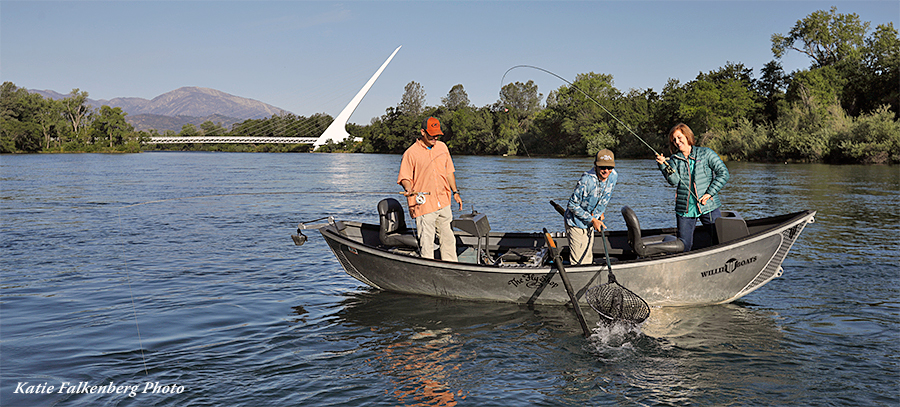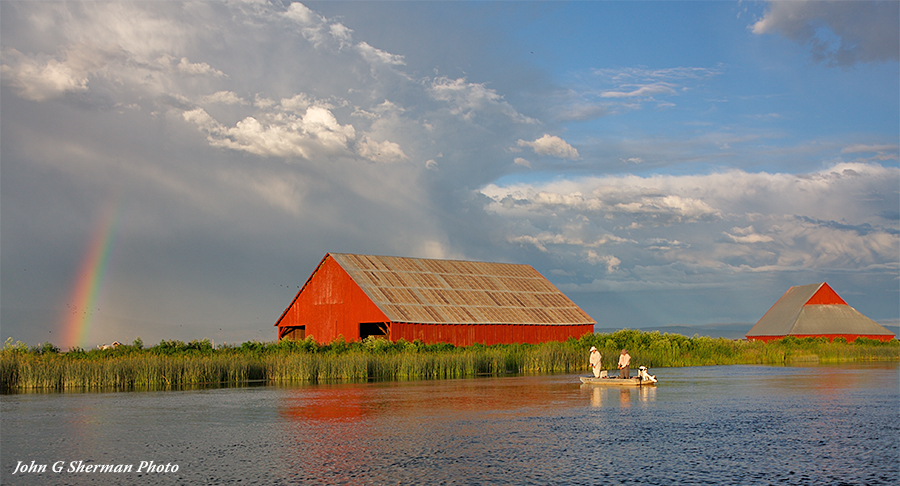Top Five Places to Fly Fish for Trout Near Redding California
By Bryan Quick & Chris King
The American West is home to so much great fly fishing you can spend a lifetime finding different waters to fish. Up here in Northern California, we are often faced with the enviable conflict of having to choose one stream to fish at a given time, and we are often asked, “Where should we go…?” If you have never fished the Northern California streams in and around the Redding area, put these five on your bucket list.
Upper Sacramento River:
We have seen drastic changes to the Sacramento River above Lake Shasta. It’s one of the most prolific trout streams in the West. After a disastrous chemical spill in 1991 made the angling world cry, the river had one of the most dramatic rebounds in all of conservation. Today, the Upper Sac offers a trout fishery playground. Any given day on this river anglers can choose their own tactic. From swinging soft hackles to Euro-nymphing, which owes its roots to Ted Fay who in the 1940s high-sticked his Bomber fly through pocket waters in and around Dunsmuir, this river offers great fly fishing opportunities nearly every day of the year.
Access on the Upper Sac is as good as it gets for streams these days. There are over 30 miles of public access to this freestone gem provided by the Union Pacific railroad that runs alongside its almost entire length.
The Experience:
Whether you want to throw dry flies in the Cantera Loop of the upper section, or try your hand at some trout Spey techniques for the lake-run bruisers in the lower river, the Upper Sac offers the kind of water you are looking for. Our guides have been guiding this river through all of its transitions, and they are intimate with every bend, riffle and pool this spectacular river has to offer.
McCloud River:
There are no trout in the world with a better story than the McCloud River Redband.
In 1877 on a tributary to the McCloud River named Campbell Creek, the first federal fish hatchery was established in the National Fish Hatchery System. Eggs from this hatchery were sent to another at the San Leandro hatchery. Rainbow trout eggs and fry from these two hatcheries account for the origin of most of the artificially planted rainbow trout in the world today.
We have chased trout on every corner of the globe and built a pretty good business arranging trips for others to do so as well. It is our belief that every angler owes it to themselves to experience some time on the McCloud. Today the McCloud still has the aura of days past with its deep green canyons, blue green water and hungry trout that readily take dries, chase streamers and have been revered for their acrobatics when on the end of a line.
From newspaper tycoons to coffee roasters to sports team owners who have owned private ranches on the river, the McCloud has held a special place in anglers’ hearts for over a century.
For most of our guide staff, the McCloud is where they fish on their day off. Each day of the season is special on the McCloud, and it is easy to see why so many have fallen in love with this place for so many years.
The Experience:
The McCloud River with its steep canyon walls and lush green canopy is unsurpassed in beauty in Northern California. Glacial silt from Mud Creek supplies the river with its blue green hue that is magical in pictures. With shade on the water for most of the morning and evening, you will find fish looking up nearly every day of the season. The many plunge pools that frequent its entire length are full of the most beautiful rainbows that dart back, forth, up and down to feed on nymphs throughout the day. A popular spot, you will rarely be alone on the McCloud, but this healthy fishery will give up its bounty readily.
Pit River:
The Pit River gets a bad rap for being a very difficult river. This is mainly due to the giant moss covered boulders that line its banks. One thing for sure about a day of fishing on the Pit is that you are not going to cover a lot of water. The secret to the Pit is to concentrate your efforts on the right water. It is said that 90% of all water is void of fish, and with a river as tricky to navigate as the Pit, it is imperative that you fish that elusive 10%.
The Pit River below Lake Britton (Pit 3) is a narrow-pocket water mecca. The road is windy and not often traveled for its entire length down to the town of Big Bend. As you wind down the canyon, you will go past several hydroelectric facilities sectioning the river into different tail waters, each with their own appeal. Pit 4 is the most remote of these areas and is a place to get away from the average of 10 other anglers on the entire river. When you get down to Pit 5, through the town of Big Bend, the canyon opens up a bit and offers long riffles and glides that are unlike the pocket water above. Whatever you are looking for, and if you are up to the physical challenge, the Pit has it.
The Experience:
We’ve had a love affair with the Pit River over the years. Once you are able to identify the areas where the fish concentrate, this river is a pocket-water paradise. The rainbows on the Pit are deep shouldered, hard fighters and the constant turbidity in the water allows you to fish right on top of them. This river is perfectly suited for short-line nymphing with an indicator and is a tight line / Euro-nymphing wonderland. So, grab your wading staff, your favorite 10’ 3wt and one of The Fly Shop® guides, and you will have all the necessary tools to unlock the secrets of the Pit.
Lower Sacramento River:
Our go-to river in the North State boasts on average some of the largest wild rainbow trout you can find in the lower 48, and when you couple this with good numbers, day in and day out the Lower Sacramento is tough to beat. This is due in large part to the year-round cold water delivered by Shasta Lake courtesy of the temperature control device installed to help the endangered winter run chinook salmon. Oh yeah, this river boasts four distinct runs of chinook salmon, and these fish returning to spawn in the river bring with them tons of eggs. The combination of cold water and long, hot days contributes to abundant insect life leading to a healthy fish population. A large river with flows topping 13,000 CFS during the summer, the best access and fishing can be had from a drift boat, which makes this a great place for beginners and experts alike. Such deep water and an abundance of aerial predators means that the Lower Sac is not a consistent dry fly river. Long-time Lower Sac fly rodders keep their calendar open for the heavy mayfly hatches in the spring and the summer caddis when they can target rising fish that often top 18-19”. With dam releases throttled back during the winter, many great places to fish become accessible to the wading angler, making the Lower Sac an all around great destination for the trout angler.
The Experience:
Drift fishing the Lower Sacramento is a picturesque, extremely productive, and relatively solitary experience. Much like Montana’s Yellowstone and Missouri Rivers, the Lower Sacramento is best suited for drift boats. It is broad, swift, deep in places and there is a good bit of great water, like the Beaverhead, flows through private property.
Our guides use many techniques when fishing the river, but drifting an indicator rig is the most common and productive way to fish this large river. During different seasons there can be excellent wade fishing during your float in which you can swing, float dry flies or switch it up a bit with a dry dropper.
Fall River:
The largest spring creek system in California is relatively short in total length at around 13 miles, but it is packed with some of the finest dry fly fishing in the state. The Fall River is formed where the volcanic rock aquifer in the Fall River basin emerges from Thousand and Rainbow Springs near Bear Creek. This clear, cold water flows southeast, winding along and slowly gaining size before passing below the Spring Creek Bridge. It is from there to its confluence with the Tule River where the majority of attention is paid, and this section harbors some of the most insect rich waters anywhere.
The Experience:
Early season hatches begin slowly, and by the end of May, daily full-on pale morning dun spinner falls each morning will have the trout stacked along current seams poking up to sip the returning mayflies. Later in the day you can target fish eating hatching imagos. The fishing can be frustrating at times because with slow currents and crystal clear water, these fish have an eternity to inspect your offerings. Mid-June through the early part of July is a prime time to witness the hexagenia limbata hatch, progressing from the lower river near the Tule up to the stretches near Circle 7 Ranch; for about 30 minutes each dusk, you can witness the largest Mayfly species emerging and large, wild rainbow trout rising to eat them. This is one phenomenon every fly angler should have on their bucket list. With little public access and virtually no wading, you will either need your own pram or to hire a guide. The Fall River was one of the first rivers The Fly Shop® began taking clients fishing, and we have the finicky trout in this system figured out.
These five trout streams are top choices among The Fly Shop’s staff for good reason. Whether you are a dry fly purist, are looking to hook the most or largest trout, or are looking for beauty and solitude, you will find what you are looking for in at least one of these great rivers. Come experience a day on one of these great trout streams with one of our professional fly fishing guides, and they will show you why it is on the list.
